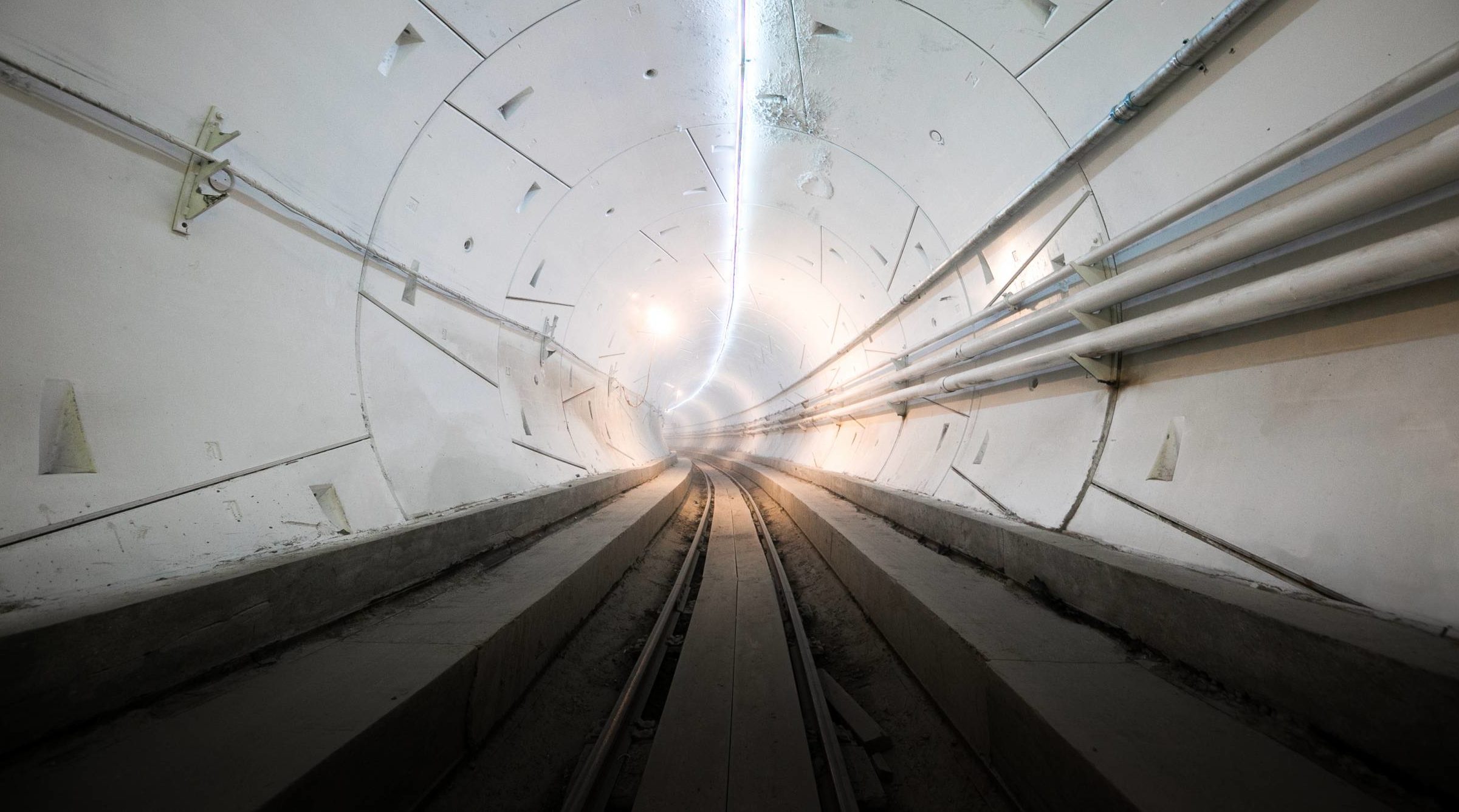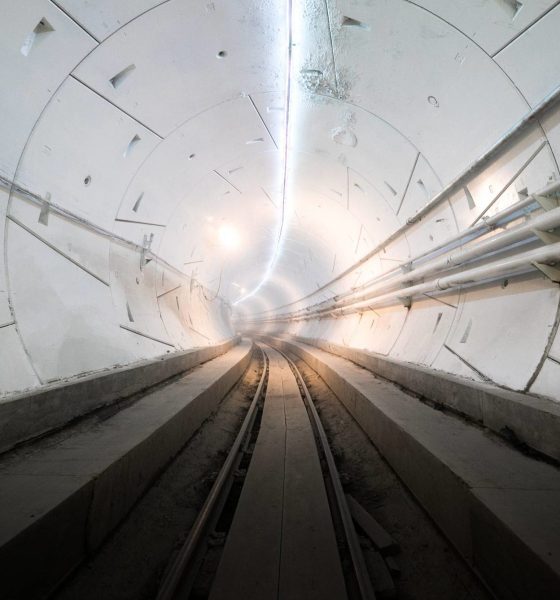

News
Elon Musk’s Boring Company in talks for airport tunnel project in Silicon Valley
The Boring Company, Elon Musk’s tunneling startup, might have another tunnel project on its hands. In a statement earlier this week, San Jose Mayor Sam Liccardo stated that he has been in talks with The Boring Co. over the last 18 months to discuss the possibility of building a tunnel linking Diridon Station and the Mineta San Jose International Airport — a distance of about 4 miles.
Addressing reporters at City Hall, the San Jose, CA mayor noted that the tunnel project could give Diridon Station a chance to “grow with the city,” particularly as Google is expected to construct a campus near Diridon in the future, which would likely bring thousands of people to the area. Apart from this, Diridon Station, the city’s main transit hub, is expected to undergo an overhaul in the future, with the Bay Area Rapid Transit (BART) line set to extend downtown to the station itself.
Around five years ago, cost estimates for the construction of a conventional rail link connecting the Mineta San Jose International Airport to Diridon were listed at a hefty $800 million. Liccardo noted that tunnels, particularly those constructed by The Boring Company, could cost just a fraction of the $800 million estimate. That said, the mayor clarified that the project, provided that it does happen, would not be locked with the Boring Co.
“It’s not that cost effective. We’ve been looking at alternatives. This is going to be open to everybody. What we’ve been exploring is the technology,” the Liccardo said.
While the idea of another Boring Company tunnel is a compelling thought, the San Jose mayor’s idea has been met with some opposition. What is rather noteworthy is that opposition to the project appears to be based on criticisms of Elon Musk as a person, not The Boring Company’s technology itself. These concerns were outlined by Jeffrey Buchanan, a member of the worker-advocacy group Working Partnerships USA, who expressed his doubts about Elon Musk’s involvement in a statement to The East Bay Times.
“There’s a lot of important decisions the city needs to make about Diridon Station and infrastructure and investments, and it’s really important that when we look at construction of our public works and operation of our public spaces that we’re working with employers that respect employees,” he said.
Elon Musk’s Boring Company might be more of a hobby for SpaceX and Tesla CEO, but the tunneling startup has accomplished some notable breakthroughs since its founding back in 2016. When the startup unveiled its test tunnel in Hawthorne last December, for one, Elon Musk revealed that the cost of the 1.14-mile tunnel was just around $10 million, including internal infrastructure, lighting, safety systems, ventilation, and tracks. That’s substantially cheaper than larger, conventional tunnels, which could cost as much as $1 billion per mile.
The Boring Company is also working in developing a next-generation tunnel boring machine that is all-electric, making it faster, quieter, and cleaner than conventional TBMs. These innovations are expected to be utilized in the company’s upcoming projects, such as the Chicago-O’Hare high-speed transport line.

News
Tesla is seeing a lot of momentum from young Koreans in their 20s-30s: report
From January to November, young buyers purchased over 21,000 Teslas, putting it far ahead of fellow imported rivals like BMW and Mercedes-Benz.

Tesla has captured the hearts of South Korea’s 20s-30s demographic, emerging as the group’s top-selling imported car brand in 2025. From January to November, young buyers purchased over 21,000 Teslas, putting it far ahead of fellow imported rivals like BMW and Mercedes-Benz.
Industry experts cited by The Economist attributed this “Tesla frenzy” to fandom culture, where buyers prioritize the brand over traditional car attributes, similar to snapping up the latest iPhone.
Model Y dominates among young buyers
Data from the Korea Imported Automobile Association showed that Tesla sold 21,757 vehicles to the 20s-30s demographic through November, compared to BMW’s 13,666 and Mercedes-Benz’s 6,983. The Model Y led the list overwhelmingly, with variants like the standard and Long Range models topping purchases for both young men and women.
Young men bought around 16,000 Teslas, mostly Model Y (over 15,000 units), followed by Model 3. Young women followed a similar pattern, favoring Model Y (3,888 units) and Model 3 (1,083 units). The Cybertruck saw minimal sales in this group.
The Model Y’s appeal lies in its family-friendly SUV design, 400-500 km range, quick acceleration, and spacious cargo, which is ideal for commuting and leisure. The Model 3, on the other hand, serves as an accessible entry point with lower pricing, which is valuable considering the country’s EV subsidies.
The Tesla boom
Experts described Tesla’s popularity as “fandom culture,” where young buyers embrace the brand despite criticisms from skeptics. Professor Lee Ho-geun called Tesla a “typical early adopter brand,” comparing purchases to iPhones.
Professor Kim Pil-soo noted that young people view Tesla more as a gadget than a car, and they are likely drawn by marketing, subsidies, and perceived value. They also tend to overlook news of numerous recalls, which are mostly over-the-air software updates, and controversies tied to the company.
Tesla’s position as Korea’s top import for 2025 seems secured. As noted by the publication, Tesla’s December sales figures have not been reported yet, but market analysts have suggested that Tesla has all but secured the top spot among the country’s imported cars this year.
News
Tesla FSD fleet is nearing 7 billion total miles, including 2.5 billion city miles
As can be seen on Tesla’s official FSD webpage, vehicles equipped with the system have now navigated over 6.99 billion miles.

Tesla’s Full Self-Driving (Supervised) fleet is closing in on almost 7 billion total miles driven, as per data posted by the company on its official FSD webpage.
These figures hint at the massive scale of data fueling Tesla’s rapid FSD improvements, which have been quite notable as of late.
FSD mileage milestones
As can be seen on Tesla’s official FSD webpage, vehicles equipped with the system have now navigated over 6.99 billion miles. Tesla owner and avid FSD tester Whole Mars Catalog also shared a screenshot indicating that from the nearly 7 billion miles traveled by the FSD fleet, more than 2.5 billion miles were driven inside cities.
City miles are particularly valuable for complex urban scenarios like unprotected turns, pedestrian interactions, and traffic lights. This is also the difference-maker for FSD, as only complex solutions, such as Waymo’s self-driving taxis, operate similarly on inner-city streets. And even then, incidents such as the San Francisco blackouts have proven challenging for sensor-rich vehicles like Waymos.
Tesla’s data edge
Tesla has a number of advantages in the autonomous vehicle sector, one of which is the size of its fleet and the number of vehicles training FSD on real-world roads. Tesla’s nearly 7 billion FSD miles then allow the company to roll out updates that make its vehicles behave like they are being driven by experienced drivers, even if they are operating on their own.
So notable are Tesla’s improvements to FSD that NVIDIA Director of Robotics Jim Fan, after experiencing FSD v14, noted that the system is the first AI that passes what he described as a “Physical Turing Test.”
“Despite knowing exactly how robot learning works, I still find it magical watching the steering wheel turn by itself. First it feels surreal, next it becomes routine. Then, like the smartphone, taking it away actively hurts. This is how humanity gets rewired and glued to god-like technologies,” Fan wrote in a post on X.
News
Tesla starts showing how FSD will change lives in Europe
Local officials tested the system on narrow country roads and were impressed by FSD’s smooth, human-like driving, with some calling the service a game-changer for everyday life in areas that are far from urban centers.

Tesla has launched Europe’s first public shuttle service using Full Self-Driving (Supervised) in the rural Eifelkreis Bitburg-Prüm region of Germany, demonstrating how the technology can restore independence and mobility for people who struggle with limited transport options.
Local officials tested the system on narrow country roads and were impressed by FSD’s smooth, human-like driving, with some calling the service a game-changer for everyday life in areas that are far from urban centers.
Officials see real impact on rural residents
Arzfeld Mayor Johannes Kuhl and District Administrator Andreas Kruppert personally tested the Tesla shuttle service. This allowed them to see just how well FSD navigated winding lanes and rural roads confidently. Kruppert said, “Autonomous driving sounds like science fiction to many, but we simply see here that it works totally well in rural regions too.” Kuhl, for his part, also noted that FSD “feels like a very experienced driver.”
The pilot complements the area’s “Citizen Bus” program, which provides on-demand rides for elderly residents who can no longer drive themselves. Tesla Europe shared a video of a demonstration of the service, highlighting how FSD gives people their freedom back, even in places where public transport is not as prevalent.
What the Ministry for Economic Affairs and Transport says
Rhineland-Palatinate’s Minister Daniela Schmitt supported the project, praising the collaboration that made this “first of its kind in Europe” possible. As per the ministry, the rural rollout for the service shows FSD’s potential beyond major cities, and it delivers tangible benefits like grocery runs, doctor visits, and social connections for isolated residents.
“Reliable and flexible mobility is especially vital in rural areas. With the launch of a shuttle service using self-driving vehicles (FSD supervised) by Tesla in the Eifelkreis Bitburg-Prüm, an innovative pilot project is now getting underway that complements local community bus services. It is the first project of its kind in Europe.
“The result is a real gain for rural mobility: greater accessibility, more flexibility and tangible benefits for everyday life. A strong signal for innovation, cooperation and future-oriented mobility beyond urban centers,” the ministry wrote in a LinkedIn post.








